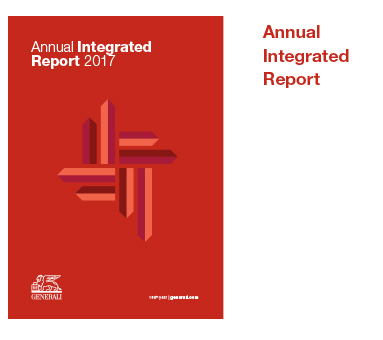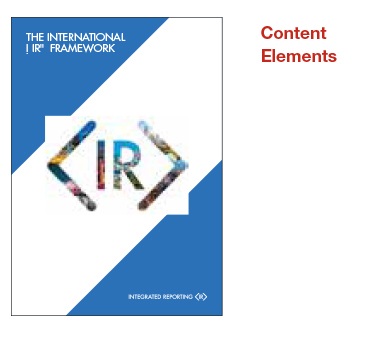The Consolidated Financial Statements of the Generali Group as at 31 December 2017 were drawn up in accordance with the IAS/IFRS international accounting standards - issued by the IASB and endorsed by the European Union – as well as with Regulation (EC) no. 1606/2002, Leg. Decree 58/1998 as amended, and Leg. Decree 209/2005, as amended by Leg. Decree 32/2007.
This annual Report includes both the consolidated financial statements and notes in accordance with ISVAP Regulation of 13 July 2007, no. 7 as amended, and the information required under CONSOB Communication of 28 July 2006, no. 6064293. As allowed by the aforementioned ISVAP Regulation, the Generali Group believed it appropriate to supplement its consolidated financial statements with detailed items and provide further details in the notes, also to meet the international accounting standards (IAS/IFRS) requirements.
The Group used the option provided for under art. 70, paragraph 8, and art. 71, paragraph 1-bis of the Issuers’ Regulation to waive the obligation to publish the information documents provided for in relation to significant mergers, de-mergers or capital increases by contribution of assets, acquisitions and disposals.
At 31 December 2017, the consolidated scope decreased from 428 to 423 companies, of which 388 were consolidated on a line by line basis, and 35 measured with the equity method.
This Report was drawn up in euros (the functional currency used by the entity that prepared the Consolidated Financial Statements) and the amounts were shown in millions, rounded to the first decimal unless otherwise stated, and therefore the rounded amounts may not always coincide with the rounded total.
A description of the alternative performance indicators presented in this Report is available in the related Methodological note.
The Annual Integrated Report also provides non-financial information, in accordance with the provisions of Leg. Decree 254/2016, in implementation of European Directive 2014/95, and Consob Regulation of 18 January 2018, no. 20267.
Consolidated Non-Financial Statement
All the disclosures by geographic area within this Report is based on the new Group managerial structure, made up of the business units in the main three markets - Italy, France and Germany - and four regional structures:
- Central and Eastern Europe countries: Czech Republic, Poland, Hungary, Slovakia, Serbia/Montenegro, Romania, Slovenia, Bulgaria and Croatia;
- International: consisting of EMEA, Americas, Asia, Europ Assistance and Other companies;
- Investments, Asset & Wealth Management, which includes the main Group entities operating in investment advisory, asset management and financial planning. In addition, Group holdings and other companies, which includes the Parent Company’s management and coordination activities, including Group reinsurance, other financial holding companies and suppliers of international services not included in the previous geographic areas.
Our reference market: positioning and performance
As noted above, the Management Report is drafted in compliance with currently effective regulations as well as the Content Elements and Guiding Principles envisaged by the International <IR> Framework of the InternationalIntegrated Reporting Council (IIRC).
The Annual Integrated Report enriches and makes the Management Report more accessible, expanding contents while maintaining a more rigorous and logical order.
Respect for the International <IR> Framework as for the Content Elements is shown in the margin: each chapterof the Report, that presents a new structure, meets oneor more Content Elements. The Guiding Principles are illustratedlater.


| We, Generali | ||
| Group highlights | Performance | |
| Our history 2017 and 2018 key facts | Organisational overview and external environment | |
| How we create sustainable value: our business model | Business model | |
| Vision, Mission, Values | Organisational overview and external environment | |
| Our rules for running business with integrity | Organisational overview and external environment Performance Risks and opportunities | |
| Our strategy | Strategy Performance | |
| Our governance and remuneration policy | Governance | |
| Risks and opportunities of the external context | Risks and opportunities | |
| Ourperformance | Performance | |
| Outlook | Outlook | |
As regards the Guiding Principles, the Strategic focus and future orientation principle is applied in the whole document. Indeed, the strategy guides the process of creating value and summarizes in and of itself the material aspects for the Group.
The Materiality approachis presented in detail in the Consolidated Non-FinancialStatement.
Consolidated Non-Financial Statement
In accordance with the Connectivity of information principle, the report should represent the combination and interrelatedness of the factors that influence the ability to create value over time. The key forms of connectivity used by Generali include the connectivity between qualitative and quantitative information, financial and non-financialinformation, in accordance with the information included in other communication tools. Other elements that improve the connectivity of information and the overall usefulness of the report are the cross-referencing (also thanks to the graphic component) and a clear language.
The Glossary can be used where the languageis excessively technical. Generali also publishes an interactive version of the integrated financial statements on its website. This is another tool to further highlight the connectivity of information.
Generali maintains Stakeholder relationships in order to understand and meet their needs, especially their information and dialogue requirements.
We regularly engage with investors, analysts and rating agencies to fulfil their information needs. The interaction takes place during quarterly results presentation, as well as during the annual Shareholders’ Meeting and Investor Days. We also organise roadshows and sector conferences, providing them with the appropriate information. During 2017 we came into contact with more than 680 people (about 250 individual meetings and 430 small group meetings) in the most important financial centres of Europe and North America.
We regularly interact with regulators and the European Institutions to maintain good relationships and share authoritative and updated information in order to properly interpret and apply new regulations. We also offer our skills and contribute to public consultations for the definition of new laws and regulations in the sector, by providing, in view of our direct experience, concrete indications in order to safeguard the specificities of the Group and the insurance industry. To this purpose, we collaborate with several trade organizations and associations. Our active presence in these organizations allows us also to expand our knowledge of the different regulations and potential impacts.
Some years ago we started interacting with students from the main Italian universities, providing specific sessions on our new reporting approach and on the implications at a national and international level. With a survey we are also taking their feedback and suggestions on the Integrated Report implementation. As from 2016, we have extended this experience to Group employees as well. Overall, we met with around 260 people.
We also engage customers, distributors and Group employees with a view to continuous improvement.
Our report has been improved in many aspects also considering our stakeholders’ feedback; for instance, Conciseness was improved, as was connectivity among the Group’s different reports and among the different parts of the report, therefore making it easier to read with a more logical structure. The diagram below shows the passage from the Annual Integrated Report, drawn up in accordance with the Materiality principle, to the Annual Integrated Report and Consolidated Financial Statements, drawn up in accordance with the law.

As for Reliability and completeness, the Annual Integrated Report is supported by a structured information system, processing financial and non-financial information. This allows Generali to increase homogeneity and reliability of both types of information. As for the scope of the reporting, the performance indicators refer to the entire Group unless otherwise indicated.
In accordance with the Consistency and Comparability principle, the report includes information that is consistent with the previous year, unless otherwise indicated, and the strategic objectives announced to the market.
Consolidated Non-Financial Statement
In accordance with the provisions of GRI 101: Foundation, paragraph 3, it references to the following GRI Sustainability Reporting Standards:
- GRI 102: General Disclosures 2016 - Disclosure 102-16 Values, principles, standards, and norms of behavior as for the material matiness management;
- GRI 102: General Disclosures 2016 - Disclosure 102-43 Approach to stakeholder engagement as for the material matter Quality of the customer experience;
- GRI 103: Management Approach;
- GRI 205: Anti-corruption 2016 as for the material matter Prevention of corruption;
- GRI 305: Emissions 2016 - Disclosure 305-5 Reduction of GHG emissions1 as for the material matter Climate change and natural disasters;
- GRI 404: Training and Education 2016 as for the material matters Attracting talent and development of human capital and e Employee engagement and promotion of a common culture;
- GRI 413: Local Communities 2016 as for the material matter Demographic and social change;
- GRI 418: Customer Privacy 2016 as for the material matter Data and cyber security.
- GRI 418: Customer Privacy 2016 per il tema materiale Data and cyber security.
Certain information more suitable for us is reported, considering the following GRI Sustainability Reporting Standards - General Disclosures and Topic Specific Disclosures:
- GRI 102: General Disclosures 2016 - Disclosure 102-35 Remuneration policies as for the material matter Responsible remuneration and incentives;
- GRI 205: Anti-corruption 2016 - Topic Specific Disclosure 205-2 Communication and training about anti- corruption policies and procedures;
- GRI 305: Emissions 2016 - Topic Specific Disclosure 305-1 Direct (Scope 1) GHG emissions, 305-2 Energy indirect (Scope 2) GHG emissions, and 305-3 Other indirect (Scope 3) GHG emissions;
- GRI 404: Training and Education 2016 - Topic Specific Disclosure 404-1 Average hours of training per year per employees, and 404-3 Percentage of employees receiving regular performance and career development reviews.
Finally, the following indicators of the GRI G4 Financial Services Sector Supplement are considered:
- FS7 Monetary value of products and services designed to deliver a specific social benefit for each business line broken down by purpose as for the material matter Product and services development;
- FS8 Monetary value of products and services designed to deliver a specific environmental benefit for each business line broken down by purpose as for the material matter Product and services development;
- FS11 Percentage of assets subject to positive and negative environmental or social screening as for the material matter Responsible investments and underwriting.
The reporting process and methodologies to calculate indicators are included in a specific document.
Changes in the presentation of the performance indicators of the Group
All the comparative economic and performance indicators included in this Management Report have been restatedin line with the current consolidation scope and the review of the disclosure by geographic area as indicated above. It is therefore noted that the changes in the Management Report are on a like-for-like basis, excluding the aforementioned discontinued or disposed operations with reference to 31 December 2017 from the comparative period.
As abovementioned, the comparative KPIs in this Report have been recalculated as follows:
| (€ million) | 31/12/2016 as previously published | change | 31/12/2016 restated |
|---|---|---|---|
| Gross written premiums | 70,513 | -1,606 | 68,907 |
| Life gross written premiums | 49,730 | -1,330 | 48,400 |
| P&C gross written premiums | 20,783 | -276 | 20,507 |
| Life Net cash inflows | 12,049 | -256 | 11,793 |
| Operating result | 4,830 | -46 | 4,783 |
| Life | 3,127 | -43 | 3,084 |
| P&C | 2,044 | 29 | 2,073 |
| Holding and other businesses | -91 | 17 | -74 |
| Consolidation adjustments | -251 | -49 | -300 |
| Non-operating result | -1,529 | 4 | -1,526 |
| Assets Under Management | 530,401 | -14,082 | 516,319 |
| Group debt | 51,416 | -10,302 | 41,114 |
* It refers to liabilities related to investment contracts.
1 The reduction of total emissions amounted to t 11,875 CO2e compared to base year 2013. The latter was choosen since it is the baseline for the goal to reduce total emissions by 20% by 2020. The reduction was attributable to indirect emissions (Scope 2 and Scope 3). The gases included were: CO2, CH4 and N2O. The methodology adopted is the WRI GHG Corporate Standard Protocol.
